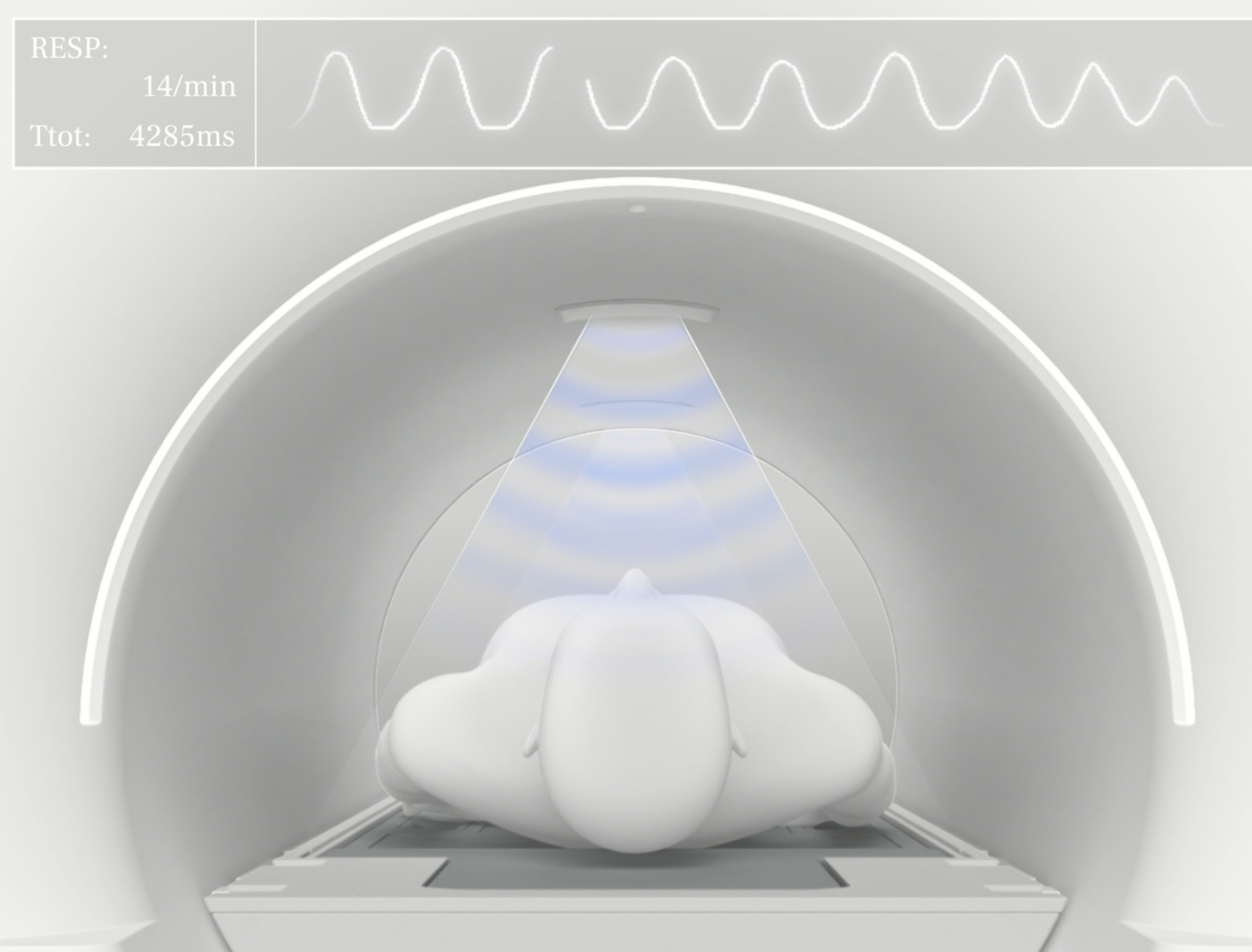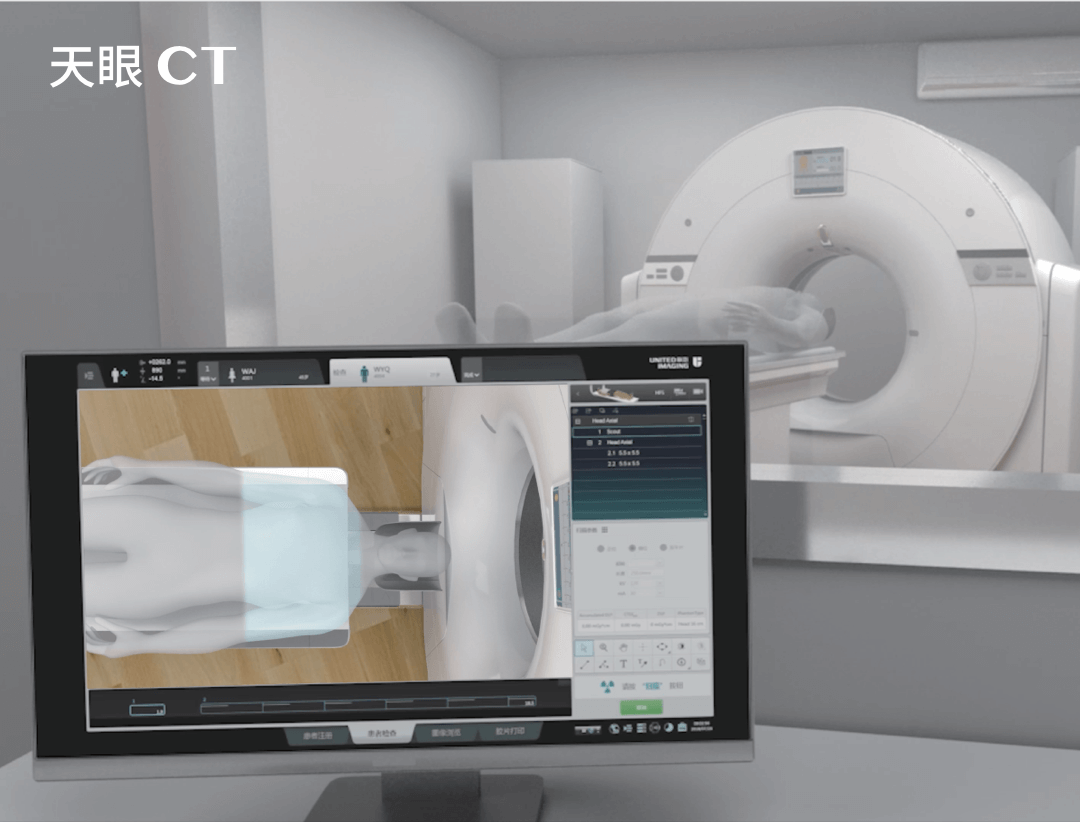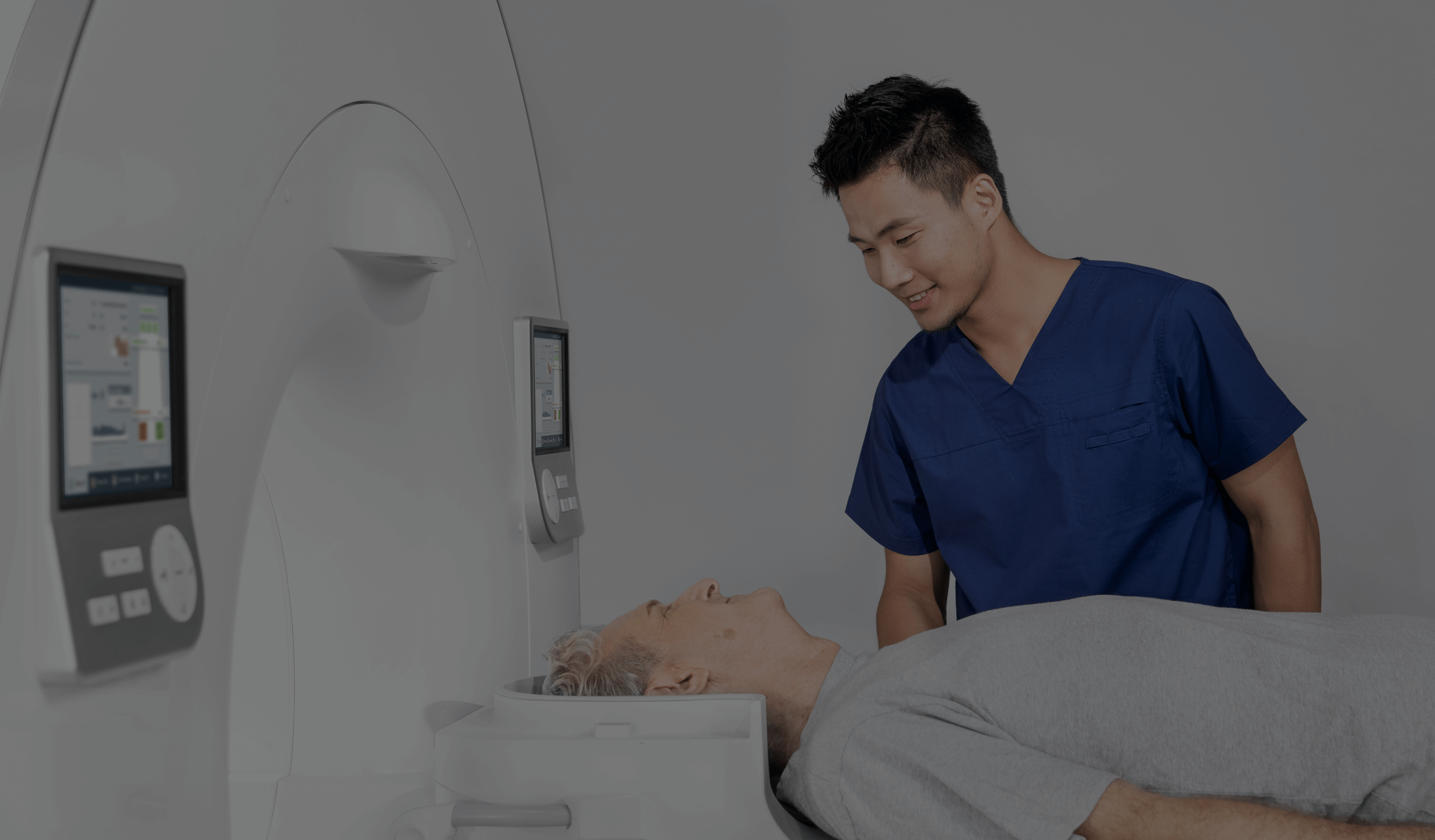Abdominal MRI
Abdominal MRI is a very important tool in modern medical diagnostics, allowing detailed evaluation of internal organs without the need to expose the patient to ionising radiation. Abdominal MRI focuses on organs such as the liver, pancreas, spleen, gallbladder, stomach, intestines, ureters and kidneys. Importantly, modern MRI techniques allow painless, safe and multidimensional analysis of abdominal structures, tissues and organs, providing extremely precise images of the organs examined.
What does an abdominal MRI look like?
Magnetic resonance imaging (MR, MRI) uses radio waves in a strong magnetic field to generate images of organs and structures within the abdominal cavity. The technique produces high-resolution images that can be crucial for diagnosis and treatment planning. Abdominal MR provides detailed images of the liver, pancreas, spleen, kidneys, adrenal glands, gallbladder, gastrointestinal tract (including stomach and intestines) and blood vessels. This examination allows assessment of their structure, size and location as well as detection of all kinds of pathological lesions.
Abdominal MRI – indications
Performing an abdominal MRI is generally indicated in the following cases:
- suspected cancer;
- assessment of organ damage following trauma;
- diagnosis of vascular diseases, including aneurysms;
- chronic abdominal pain of unknown origin;
- suspected inflammatory diseases of internal organs;
- monitoring the effects of treatment of abdominal diseases;
- preparation for planned surgical procedures.
THIS MAY ALSO INTEREST YOU: ABDOMINAL CT SCAN
What conditions can abdominal MRI detect?
Abdominal MRI enables the detection of a range of conditions, including:
- cancerous lesions;
- liver diseases such as hepatic cirrhosis or steatosis;
- inflammations and infections;
- kidney and gallstones;
- intestinal diseases, including IBS and Crohn’s disease;
- congenital malformations of the organs;
- vascular malformations and aneurysms.
Specialised abdominal MR examinations
Abdominal MRI includes a variety of dedicated examinations that are tailored to evaluate specific organs or structures in greater detail. Each type of MRI has its own application, enabling accurate diagnosis and supporting treatment planning. Some of the types of abdominal MRI are listed below:
- MR cholangiopancreatography (MRCP) – MRCP is a non-invasive imaging examination that allows a detailed evaluation of bile ducts and pancreatic ducts. It is particularly useful in the diagnosis of cholelithiasis, congenital bile duct anomalies, pancreatitis as well as pancreatic and biliary cancers. MRCP allows visualisation of the biliary and pancreatic ducts without the need to inject a contrast agent directly into these ducts, making it a safer and less invasive alternative to traditional endoscopic retrograde cholangiopancreatography (ERCP).
- Dynamic contrast MRI – this is a type of examination that uses an intravenous contrast agent to assess blood flow through abdominal organs such as the liver, kidneys and pancreas. It is particularly useful in identifying and characterising tumours as well as assessing congestion, ischaemia and other blood flow abnormalities. Dynamic imaging sequences allow contrast distribution to be tracked over time, providing additional information about the function of the organs studied.
- MR enterography – this is a specialised MRI examination designed to evaluate the intestines, particularly in the diagnosis of Crohn’s disease and other inflammatory bowel diseases. During this examination, the patient is administered a special contrast fluid orally or by gavage to help evaluate the mucosa and structure of the intestinal walls. MR enterography allows detection of inflammation, strictures, fistulas and other intestinal pathologies.
- MR spectroscopy – a technique that allows the chemical composition of tissues to be analysed, which is useful in assessing metabolic changes in organs. Although it is primarily used in brain studies, MR spectroscopy can also be used in the diagnosis of liver disease, providing information on the presence of steatosis or fibrosis.
- MR angiography – a versatile imaging method that can be used to evaluate many organs and structures within the abdominal cavity. Given its ability to visualise blood vessels and blood flow in real time, MR angiography is used to diagnose and monitor pathological conditions of various parts of the gastrointestinal or genitourinary tract as well as other abdominal structures.
- MR venography – a specialised magnetic resonance imaging procedure that focuses on imaging the veins in the abdominal cavity. It uses magnetic fields and radio waves to generate detailed images of the venous system, allowing assessment of its structure and flow of blood through the abdominal veins. Thanks to its high resolution and 3D visualisation capabilities, MR venography is extremely useful in diagnosing a variety of pathological conditions involving abdominal veins.
- MR urography – a specialised imaging test that uses magnetic resonance to visualise the urinary system in detail, including the kidneys, ureters, bladder, and in some cases also the urethra.
Each of these types of abdominal MR scans has its own specific applications and requires appropriate patient preparation. UIH’s innovative MR scanners are equipped with state-of-the-art software and functionalities enabling them to perform all types of abdominal MR examinations.
SEE ALSO: CT SCAN OF THE JOINTS
Preparation for abdominal MRI
Preparation for an abdominal MRI scan may vary depending on the organ being examined. For this reason, the medical facility where the examination is to take place should always provide detailed information about preparation to the patient before the scan is performed.
Depending on the organs examined, patient preparation may include:
- Stomach and intestines – for imaging the stomach and intestines, the patient is often required to take the contrast agent orally. The contrast agent improves the visibility of the mucosa and gastrointestinal tract structures. Patients are usually instructed to fast for several hours before the examination to minimise image interference caused by intestinal contents.
- Liver, pancreas, spleen – no special oral preparation is usually required for MRI scans of these organs unless the radiologist decides otherwise to improve imaging quality. Intravenous contrast may be recommended to better differentiate structures and evaluate possible lesions.
- Urinary bladder – patients may be asked to drink more water before the examination to keep the bladder full for better imaging.
Abdominal MRI provides extremely valuable information that is essential for making an accurate diagnosis and appropriate treatment planning. MRI has several advantages: high accuracy, no radiation exposure and the ability to repeat the examination if required. Contraindications to the scan are limited, and modern techniques and contrast agents allow even more detailed images to be obtained.
*ATTENTION! The information contained in this article is for informational purposes and is not a substitute for professional medical advice. Each case should be evaluated individually by a doctor. Consult with him or her before making any health decisions.
SEE ALSO: SPINAL MRI SCAN



